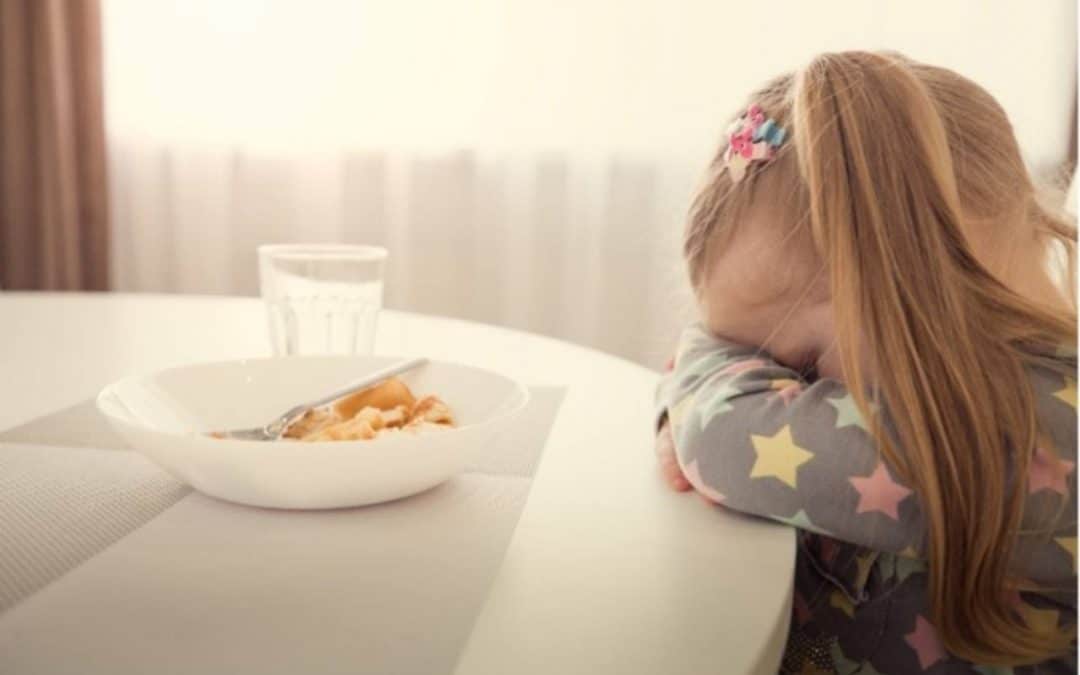A few weeks ago, I watched an episode of Bluey that blew my mind – not a rare occurrence though! In the Pavlova episode, Bingo – a 4yo dog/girl – is hungry for pavlova, a dessert made of meringue sheets layered with whipped cream and assorted fruits. Her mother refuses to let her have it and offers edamame beans (steamed fresh soybeans) instead. Bingo and her older sister, Bluey, then plot a game where they try to trick the parents and get to eat the, now highly desirable, dessert. Their father then joins in the game and conducts it in a way that sparks Bingo’s curiosity and she ends up trying one edamame bean.
I loved that episode so much because it, very amusingly and accurately, shows how two contrasting feeding styles can affect a child’s food choices. I’m talking about controlling vs. trusting feeding styles.
Research has shown over and over that controlling feeding leads to unwanted or negative results most of the time. Simply put, children don’t start eating better in response to their parents’ pressures for them to do so.
You may say “I don’t pressure my kids to eat, but my rule is that they have to at least try first” or “I never force them to eat, but I don’t allow dessert if they refuse dinner”. To many, it all may sound harmless and sensible. But, in fact, those very words are felt by children as pressure to eat. They have heard those words so many times that they know exactly their parents’ intent when they use them.
A study published two years ago concluded that even subtler encouragements to eat like “nice that you tried your veggies” or “mmm… broccoli is so yummy” or even “would you like to try the green beans tonight?” have no effect in fussy eaters’ food choices, and have a negative effect in non-fussy eaters as they, in fact, eat fewer vegetables when ‘encouraged’ to do so.
Bingo and Bluey’s mother’s feeding style is obviously controlling and the story shows its poor outcome as the girls don’t take her word and try to, surreptitiously, eat the forbidden dessert anyway.
If you too have tried to use dialogue and reasoning to convince your children to eat healthy food, or even forced them somehow, and it didn’t end very well or because they threw a tantrum or because they, like Bingo and Bluey, tried to get it their way, in secret, you know it doesn’t work. Will it ever work?
It sure can, from time to time. That happens because children too get tired and give in at times. But that doesn’t mean they started liking their veggies and that that problem is overcome. It’s a behaviour that comes and goes or, as parents that I come across put it: “it’s a hit and miss”. This actually means that the child isn’t ready to enjoy that food yet and only had some of it to satisfy the adult who was pressuring them to eat it.
What Bandit – Bingo and Bluey’s father – does in the game is buy time before Bingo gets a slice of pavlova. He gets in the way of the girls’ script for the game and slows it down, so Bingo has the chance to explore edamame beans a little more and, more importantly, to decide for herself if she is going to eat it or not, without pressure. This is what a trusting feeding style looks like!
Another piece of research published a few years ago showed that giving children more control over their food and eating was associated with the rating as ‘liked’ a higher number of healthy foods than children who had no control over what they eat and had to follow parent’s rules.
One mother once told me that she “thought giving her [daughter] a choice would lead her to pick only her favourite foods, but she had proven mum wrong” as she actually started trying new foods she never took notice of before she was given the space and the time to decide what she wanted to eat from what was on offer. This transformation usually occurs quite quickly after parents change their attitude at the table to a more trusting one.
Easier said than done, I know! ???? But I tell you that it isn’t that hard either! Actually, parents that do take the plunge and try handing over to their children the responsibility of deciding if and what they want to eat from what is on the table report an immediate sense of relief as they watch their children eating better – if not a lot nor new foods in a first moment, at least without tears and, goodness!, screams – and see themselves and the rest of the family enjoying those moments around the dinner table. Finally!!
Article by Fern Rodrigues – ANutr, BFood&Nutr
www.eatplaylearnnutrition.com.au
References:
Effect of Parental Feeding Practices (i.e., Responsive Feeding) on Children’s Eating Behaviour (Study, 2019, Aus)
Maternal prompting types and child vegetable intake: Exploring the moderating role of picky eating (Study, 2019, USA)
Parental feeding practices, food neophobia, and child food preferences: What combination of factors results in children eating a variety of foods? (Study, 2015, USA)




